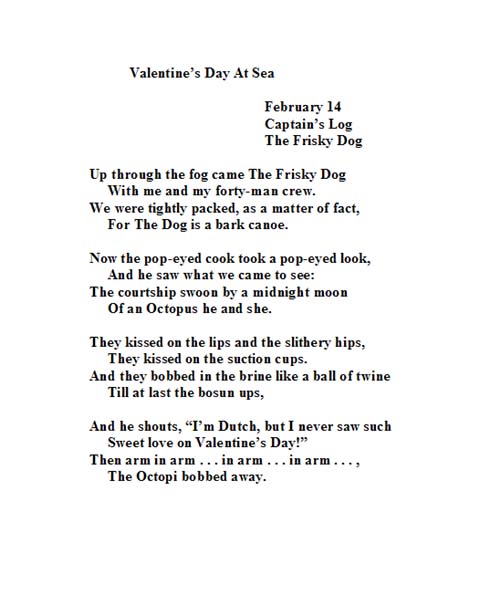Poetry Friday and Michael J. Rosen:
Haiku is for the Birds
 Friday, February 27th, 2009
Friday, February 27th, 2009
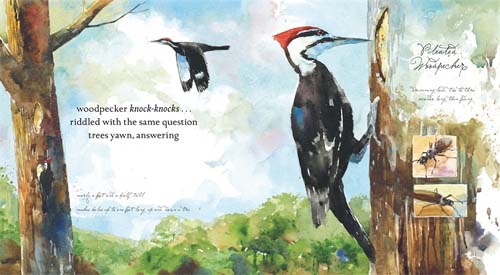
 There’s this book. It’s called The Cuckoo’s Haiku: And Other Birding Poems (Candlewick). It was written by the very prolific Michael J. Rosen and illustrated with remarkable grace by Stan Fellows and will be released very, very soon — in March. This poetry volume is designed to be not unlike a field notebook on birds — twenty-four North American birds from the Eastern Bluebird to the Dark-Eyed Junco — divided by seasons, starting with Spring and ending with Winter. (The Pileated Woodpecker opens this post.) A spare, evocative haiku from the mind and observant eye of Rosen accompanies each bird (“first feeders at dawn / paired like red quotation marks / last feeders at dusk” is the entry for the Northern Cardinal), as well as lush and—there’s no other word for it—beautiful watercolors from Fellows of these birds in their habitats that just shimmer right off the page. (His illustrations even include Rosen’s ardent notes about these creatures of the air. My favorites are on the American Goldfinch spreads: “travel in small groups, feeder is a tower of gold” and “funny — their song is ‘potato-chips, potato-chips.'”)
There’s this book. It’s called The Cuckoo’s Haiku: And Other Birding Poems (Candlewick). It was written by the very prolific Michael J. Rosen and illustrated with remarkable grace by Stan Fellows and will be released very, very soon — in March. This poetry volume is designed to be not unlike a field notebook on birds — twenty-four North American birds from the Eastern Bluebird to the Dark-Eyed Junco — divided by seasons, starting with Spring and ending with Winter. (The Pileated Woodpecker opens this post.) A spare, evocative haiku from the mind and observant eye of Rosen accompanies each bird (“first feeders at dawn / paired like red quotation marks / last feeders at dusk” is the entry for the Northern Cardinal), as well as lush and—there’s no other word for it—beautiful watercolors from Fellows of these birds in their habitats that just shimmer right off the page. (His illustrations even include Rosen’s ardent notes about these creatures of the air. My favorites are on the American Goldfinch spreads: “travel in small groups, feeder is a tower of gold” and “funny — their song is ‘potato-chips, potato-chips.'”)
It’s a thing of beauty, this book.
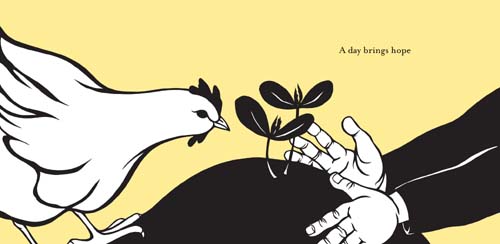
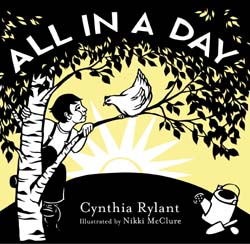 I’m taking a moment here to tell you about Newbery medalist
I’m taking a moment here to tell you about Newbery medalist 
 Meet Ernst. There he is up above and here to the left with a bird he made himself out of the wooden tail of a carousel dog, which had fallen off as the carousel was getting closed up for the winter. Ernst’s story comes to us from author/illustrator
Meet Ernst. There he is up above and here to the left with a bird he made himself out of the wooden tail of a carousel dog, which had fallen off as the carousel was getting closed up for the winter. Ernst’s story comes to us from author/illustrator 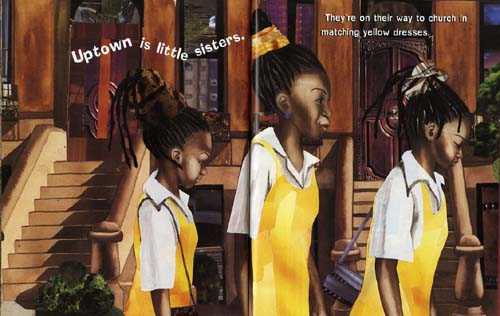

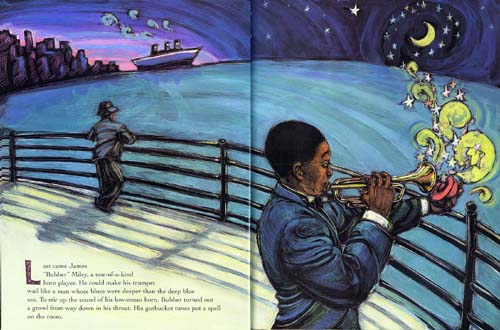
 If there’s one thing I want my girls to appreciate, as they grow, just about as much as I hope they’ll appreciate art, it’s music. When someone from the Chicago Review Press emailed to ask if I’d be interested in
If there’s one thing I want my girls to appreciate, as they grow, just about as much as I hope they’ll appreciate art, it’s music. When someone from the Chicago Review Press emailed to ask if I’d be interested in 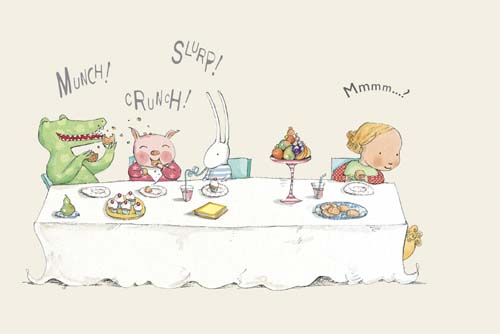
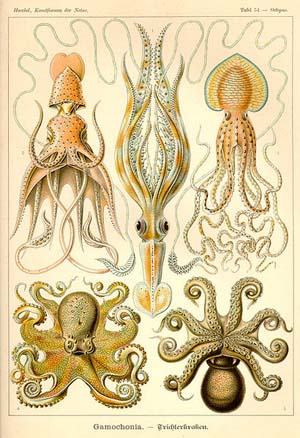 Well, my blogging plans for today were thwarted by some flu-like something or other that has rather inconveniently visited my home this week. But, lucky for us here at 7-Imp, the ever-so blog-friendly
Well, my blogging plans for today were thwarted by some flu-like something or other that has rather inconveniently visited my home this week. But, lucky for us here at 7-Imp, the ever-so blog-friendly 